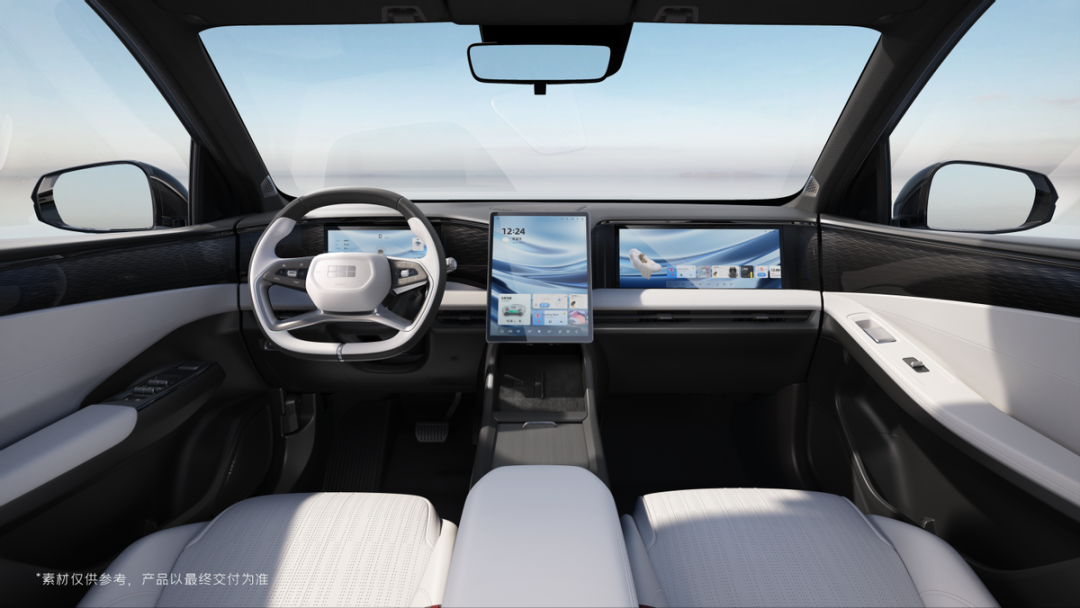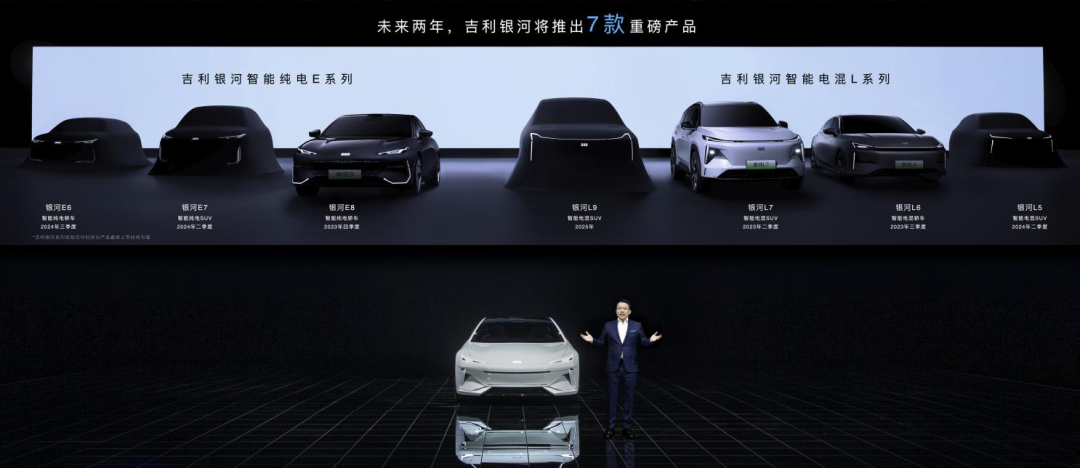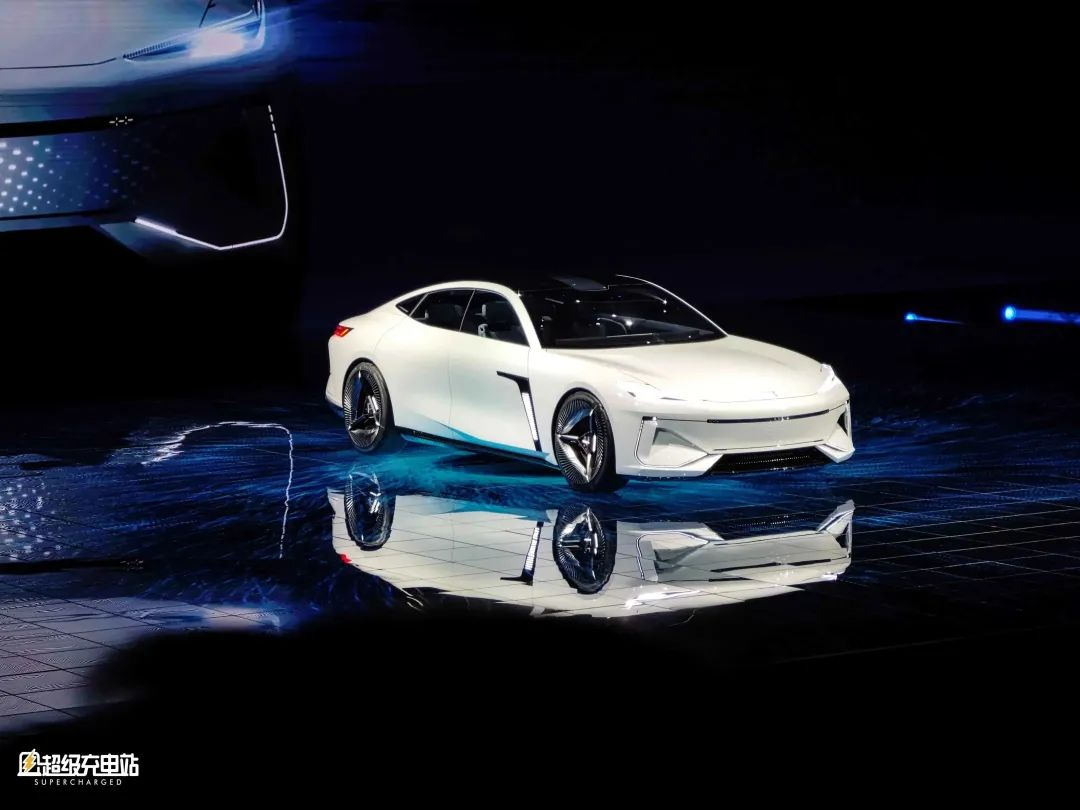Chinese Brands Upgrading to Mid-to High-end Segments
It is no longer new for Chinese brands to gear up to mid-to high-end segments. What is new is that traditional brands like Geely are starting to play marketing games like Internet companies. From Geely’s Galaxy, which announced on social media that “Galaxy is the starry sky that everyone looks up to,” to the Mingming of the new generation God of Thunder hybrid 8848 at the press conference, which indeed gained much attention and anticipation.
At the press conference, Geely showcased the prototype of “Galaxy Light” while the real highlight might be better saved for “One more thing…” However, it is also fine to first arouse audience’s appetite by presenting the product.
Now let’s take a look at the new product that remains grounded — the Geely Galaxy L7.
Familiar Galaxy L7

As Geely’s first product under the Galaxy series, the Geely Galaxy L7 is built on the e-CMA architecture. It is a compact SUV with the body size of 470019051685mm and a wheelbase of 2785mm. On the whole, the design arouses a sense of familiarity, reminding us of something we might have seen before. However, one unique feature is the completely enclosed grille design of the front face with a narrow air intake at the bottom. The integrated front face gives it the appearance of a pure electric vehicle, which is quite rare among the same level of hybrid SUVs.

The overall design of the vehicle is compact, simple, and leans toward the younger generation. The daytime running lights are in the shape of “flying eaves and arches” and the taillights adopt the common through-style design. Many elements are also taken from the “Galaxy Light” prototype car.

In terms of the interior, the Geely Star L7 is equipped with the Geely Unbounded Cabin. If there is a problem that cannot be solved with one screen, three screens are used: a 10.25-inch instrument panel, a 13.2-inch center control screen, and a 16.2-inch co-driver screen. Oh, and there is also a 25.6-inch AR HUD, which can achieve four-screen intelligent interaction, basically meeting the needs of one person per screen.
Of course, how can an SUV lack space? Geely stated that the co-driver of the Star L7 has the largest legroom in the same level, which is 630mm. The seat can be folded down to 125 degrees. In addition, the 860mm eye-screen distance allows the co-driver to have a good viewing experience when looking at the screen.
Compared with the design, perhaps the technology part that the Geely Star L7 first carried is the real highlight, leaving the design to the “Light of the Galaxy.”

First of all, Geely has launched a new generation of the Thunderbolt Hybrid 8848. In terms of power, the “three-gear variable frequency electric drive” of the Thunderbolt Hybrid 8848 can ensure that the vehicle does not stall under all working conditions, and achieve a 0-100 km/h acceleration time of 6.9 seconds, a 100-kilometer power consumption of 5.23 liters, and a CLTC comprehensive cruising range of 1370 kilometers. The data is quite satisfactory.

In terms of performance, the Thunderbolt Hybrid 8848’s “three-gear variable frequency electric drive” can achieve intelligent electric drive with P1+P2 dual-motor overdrive under the blessing of the technology, and the comprehensive power of the two drives reaches 287kW. It is the subsequent super-performance version with a comprehensive power of 488kW that is even more anticipated.
In addition to power performance, in terms of thermal efficiency, the new generation of Thunderbolt Hybrid engine B-Plus carried by the Thunderbolt Hybrid 8848 can achieve a thermal efficiency of 44.26%. Geely also announced at the press conference that the thermal efficiency of the next generation of Thunderbolt Hybrid engine can exceed 46%, but you still have to wait for a while.
 # “Galaxy Light” looking up to the stars
# “Galaxy Light” looking up to the stars
Within the next two years, the Geely Galaxy Series will launch seven new models, including four intelligent hybrid L-series and three intelligent pure electric E-series. Apart from the configurations that stimulate people’s nerves by numbers, such as power and intelligent driving, the design of a car is the first element to stimulate people’s senses. After all, in the current era of serious design homogenization, whoever can find their design direction is a more just thing than “looks are everything” . On the “Galaxy Light”, Geely has achieved this.

The various elements on the “Galaxy Light,” such as the “crouching tiger” posture of the whole vehicle, the “ripple of light” front, the “flying roof, tiger gaze” headlights, the “flying wings, heavy roof” tail lights, and the interior of the “Galaxy Cockpit Xixi Waterfront,” even if you remove the vocabulary that looks like it was brainstormed by marketing teams, just looking at the car itself, it is a low-center-of-gravity electric sports car with its own style. Even knowing that it is a concept car, it also represents the design direction of many future Geely Galaxy production models. Many design elements on the Galaxy L7 come from “Galaxy Light”.

Compared to the embellishments in describing the design, I find the most interesting aspect is how the design team deals with the relationship between various technological configurations and the overall car design. On the “Galaxy Light,” the design team used integrated design techniques to create three “technology integration zones” that span the entire body of the car, reorganizing and integrating technological smart hardware such as satellite antennas, lidar, high-definition cameras, streaming media rearview mirrors and drones, making the lines more concise and not interfering with the users through these increasingly advanced technology means.

The “technology integration zone” on the front face of the Galaxy Light incorporates cameras, radar sensors, and information display panels, while the “technology integration zone” on the side integrates air curtain covers, streaming media rearview mirrors, concealed door handles, side sentry mode camera screens, NFC unlocking zones, charging ports, outdoor mobile charging power supplies, and outdoor mobile lighting tools. And the car roof, called the “chord sky,” incorporates “low-earth-orbit satellite antennas.” Of course, the most interesting part is the drone hidden in the tail.
Actually, more than a week ago, we were very fortunate to have a close look at the prototype of the “Galaxy Light”. Geely stated that the “Galaxy Light” is a continuation of Geely’s Ripple Aesthetics and the result of the integration and evolution of modern technology. Concepts always sound mysterious, including the word “ripple”. In fact, as someone with limited knowledge, I may still not understand what exactly “ripple” means and expresses.

But after the whole press conference, I may have gained some understanding of the meaning of “ripple”. In the increasingly competitive market environment this year, Geely wants to create not only “ripple” in terms of design. After all, in recent years, Geely has had a relatively difficult transformation in the wave of new energy transformation. Geely is aware of this; In addition, according to the China Association of Automobile Manufacturers, in 2022, the sales of new energy vehicles in China reached 5.674 million units, a year-on-year increase of 90%, but the market penetration rate was only 27.6%, and the market share was only about a quarter, indicating there is a large market opportunity, and Geely is aware of this.
Before attending the “Advanced Premiere” communication meeting and the release ceremony that night, we also saw that in addition to reorganizing the hybrid camp and the pure electric camp, the sales model of Geely Galaxy will also be different from the traditional 4S store model and will be more accessible to ordinary consumers. It is not too late for the aircraft carrier to turn around. As for whether it can make a “ripple” in the ever-changing market, we are waiting for Geely Galaxy to prove it with more products.
This article is a translation by ChatGPT of a Chinese report from 42HOW. If you have any questions about it, please email bd@42how.com.
